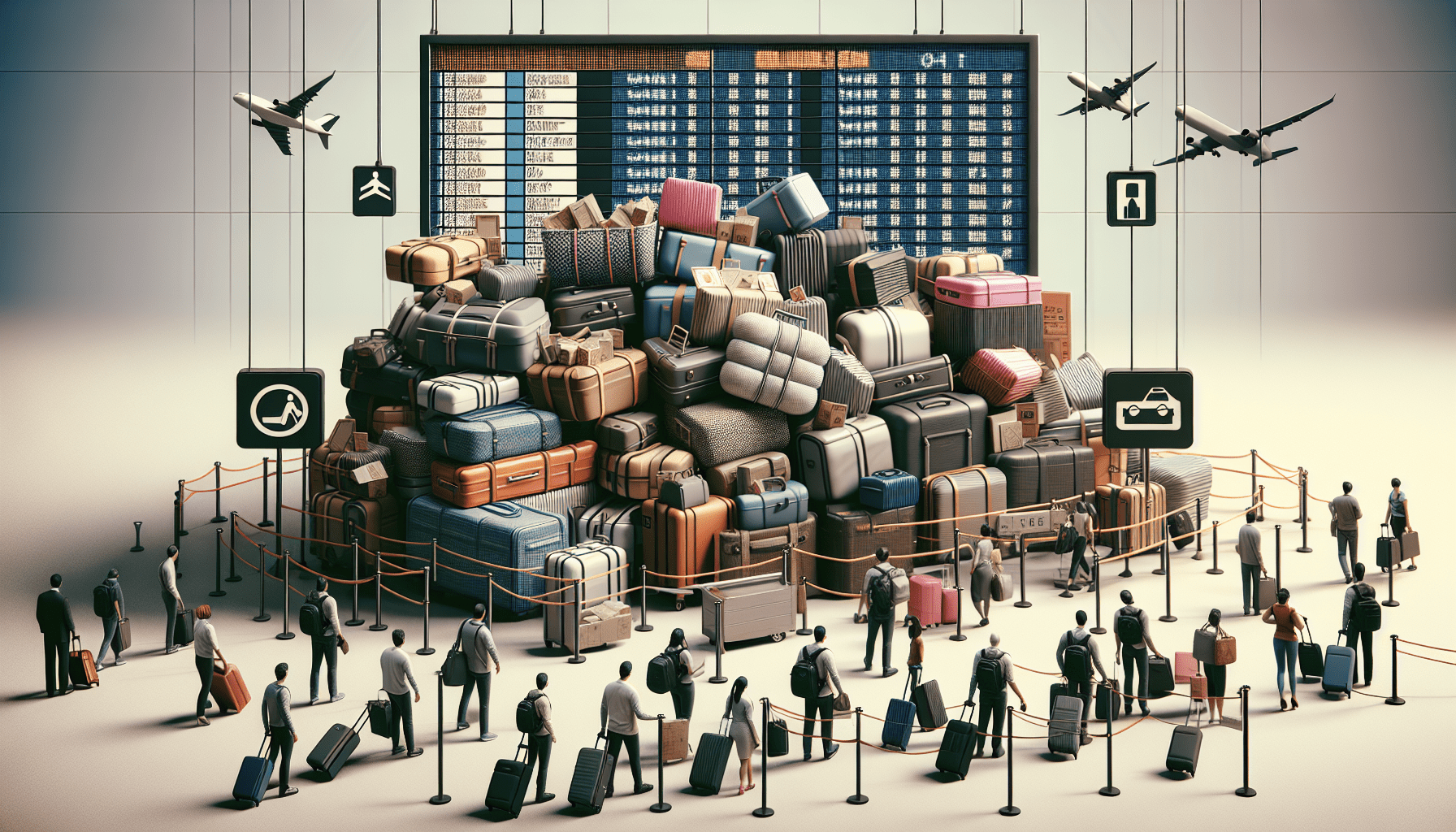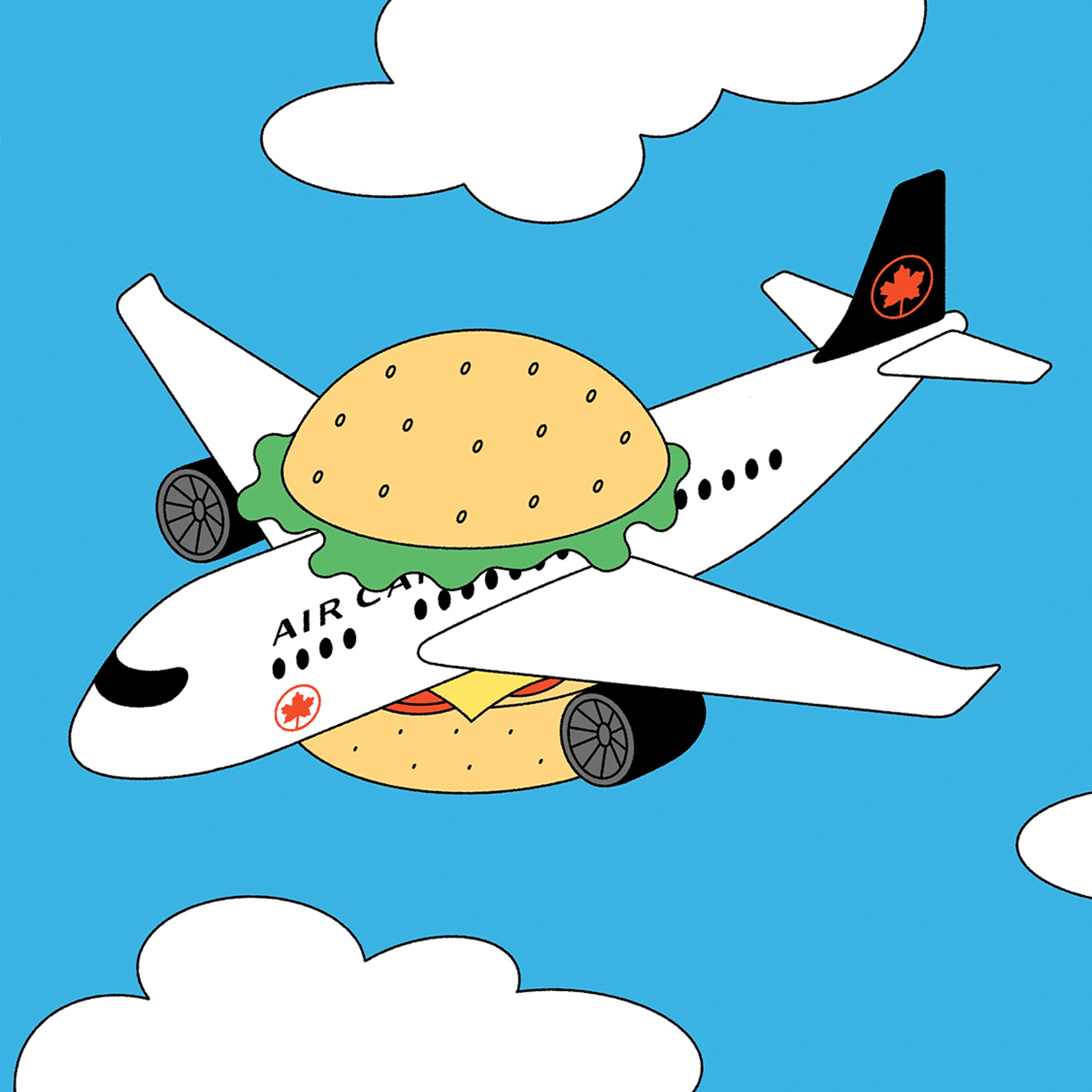BAGAIL 4 Set/6 Set/8 Set Compression Packing Cubes Travel Accessories Expandable Packing Organizers(Black ClothPattern 4 Set)
$19.99 (as of December 17, 2024 18:17 GMT +00:00 - More infoProduct prices and availability are accurate as of the date/time indicated and are subject to change. Any price and availability information displayed on [relevant Amazon Site(s), as applicable] at the time of purchase will apply to the purchase of this product.)If you’ve recently taken a flight, you might have noticed the lack of overhead bin space for carry-on bags. With more airlines charging for checked luggage, travelers are stuffing as much as possible in their carry-ons to avoid additional fees. However, this has led to overcrowded cabins and can actually cause flight delays. When bags exceed the dimension limits, flight attendants may have to check them, adding more time to the boarding process. Even a small delay can have a ripple effect throughout the day’s schedule. So, if you choose to overstuff your carry-on and it doesn’t fit, be prepared for a later arrival. Make sure to check your airline’s baggage dimensions and consider choosing soft-sided luggage to increase your chances of fitting in the overhead bins. Don’t forget to divide your belongings between your carry-on and personal item to leave more space for other passengers.
Shop These Accessories for a Comfortable Trip
The Problem with Bulky Luggage in Overhead Bins
When it comes to air travel, one of the most frustrating experiences can be dealing with limited space in overhead bins. If you’ve taken a flight recently, you likely noticed a shortage of overhead bin space for carry-on bags. Nowadays, more airlines are charging for checked luggage, which has driven every traveler to stuff as much as possible in their carry-on to avoid paying baggage fees.
The problem, however, is that many cabins aren’t equipped to hold a carry-on suitcase for every passenger, especially when those suitcases are beyond dimension limits. As a result, overhead bins are often packed to the brim, making it difficult to cram bags in the tiny compartments.
Not only does this situation create frustration for passengers trying to find space for their bags, but it can also trigger flight delays. When flight attendants deem a bag too large for the overhead bins, or when one bag is so large that it prevents other bags from being stored beside it, the luggage will have to be checked and placed in the cargo hold, even if it already made its way on board. This adds time to the boarding process that can quickly delay a scheduled flight.
Since planes operate on such a strict schedule, even a five-minute delay can compound throughout the day. To put it simply, if you choose to overstuff your carry-on bag and it doesn’t fit, expect to arrive at your destination later than planned.
Flight Delays Caused by Bulky Luggage
Flight delays are a common occurrence in the airline industry, and bulky luggage is often a leading cause. Let’s explore some of the reasons why this is the case.
Time Added to the Boarding Process
When passengers bring oversized or overpacked bags on board, it takes additional time to find space in the overhead bins. This slows down the boarding process, causing delays and frustrations for both passengers and crew members.
Strict Flight Schedules
Airlines operate on tight schedules, with flights departing and arriving at specific times. Even a small delay in the boarding process due to bulky luggage can have a domino effect, causing subsequent flights to be delayed as well. This can lead to missed connections and a ripple effect throughout the entire airline’s network.
Compounding Delays
Once a flight is delayed due to bulky luggage, it can be challenging for the airline to get back on track. The delayed flight might have to use the same gates and facilities as the next scheduled flight, causing a backlog and compounding delays throughout the day. It’s essential for airlines to address the issue of bulky luggage to minimize these delays and ensure smooth operations.

Shop These Accessories for a Comfortable Trip
Gate-Checking Luggage
To mitigate the issue of limited space in overhead bins, airlines may require some passengers to gate-check their luggage. Gate-checking entails checking the item at the gate upon boarding, where it will then be put in the cargo hold along with other checked pieces. This is typically done at the airline’s discretion due to a lack of overhead bin space.
Free of Charge vs. Additional Fees
Gate-checking your bag due to a lack of space is typically free of charge. However, if your luggage exceeds the carrier’s size allowance, you may be required to pay an additional fee for the service. Similarly, if your bag is found to be too heavy for the cabin, you may incur extra charges. It’s essential to familiarize yourself with your airline’s baggage dimensions and policies to avoid both delays and extra charges.
Checking Bag at Boarding Gate
If you find yourself in a situation where your carry-on doesn’t fit in the overhead bin, it’s important to follow the instructions of the flight attendants. They will guide you on whether you need to gate-check your bag or find an alternative solution. By cooperating with the crew and following their instructions, you can help minimize delays and ensure a smoother boarding process for everyone.
Checking Your Airline’s Baggage Dimensions
To avoid any surprises or last-minute frustrations, it’s crucial to check your airline’s baggage dimensions before heading to the airport. By doing so, you can ensure that your carry-on adheres to the size restrictions, preventing delays and extra charges.
Avoiding Delays and Extra Charges
By familiarizing yourself with your airline’s baggage dimensions and requirements, you can ensure a smooth check-in process. If you’ve made any additions to your luggage, such as duty-free shopping, double-check the size restrictions and offer to check your bag at the gate if it exceeds the limit. By being proactive and prepared, you can avoid delays and extra charges.
Checking Before Heading to the Airport
Checking your airline’s baggage dimensions should be part of your pre-flight routine. Take the time to review the requirements and measure your bag to ensure compliance. By doing this before heading to the airport, you can make any necessary adjustments or decisions and be prepared for a hassle-free check-in process.
Fees for Oversized Luggage
Different airlines have different policies when it comes to oversized luggage. Some may charge a flat fee, while others may impose additional charges based on the weight or size of the bag. It’s crucial to be aware of these fees and factor them into your travel budget to avoid any surprises or unnecessary expenses.

Choosing the Right Material for your Carry-On
The material of your carry-on luggage can make a significant difference when it comes to fitting it in the overhead bins. Here are some considerations when selecting the right material.
Comparison of Hardside and Softside Luggage
Hardside and softside luggage are the two main options available to travelers. Hardside luggage is known for its durability and protection, but it may be less flexible when it comes to fitting in tight overhead bins. Softside luggage, on the other hand, is usually more malleable and can conform to narrow spaces more easily.
Advantages of Softside Luggage
Opting for softside luggage, particularly in an easily malleable shape like a duffel bag, increases the chances of it fitting in even the tightest overhead bins. The flexibility of softside luggage allows it to be squeezed and adjusted to accommodate other bags, making it a practical choice for travelers concerned about space limitations.
Conforming to Narrow Overhead Bins
Narrow overhead bins can be a challenge, especially if you have bulky or rigid luggage. By choosing softside luggage, you can increase your chances of fitting your bag in the limited space available. The flexibility of the material allows it to be compressed or reshaped, making it easier to slide into those narrow overhead bins.
Avoiding Overstuffing and Exceeding Limits
To prevent delays and ensure a hassle-free boarding process, it’s crucial to avoid overstuffing your carry-on bag and exceeding the airline’s size and weight limits. Here’s how you can achieve that.
Suitcases Changing Size once Packed
It’s important to remember that suitcases can change in size once they are packed. What may initially fit within an airline’s size restrictions could exceed them once filled with clothing and other items. It’s essential to consider this when packing and ensure that your bag remains within the allowed dimensions.
Caution with External Pockets and Extender Zippers
External pockets and extender zippers may seem like convenient features, but they can add bulk to your luggage and push it beyond the allowed limits. Be cautious when utilizing those additional storage options, as they can inadvertently lead to delays and extra charges. Ensure that your bag, including any external pockets, remains within the specified dimensions.
Dividing Belongings between Carry-On and Personal Item
Another strategy to avoid overstuffing your carry-on is to divide your belongings between your carry-on bag and your personal item. This allows you to distribute the weight and size more evenly, making it easier to comply with the airline’s restrictions. By utilizing both your carry-on and personal item effectively, you increase your chances of a hassle-free boarding process.
Placing Personal Items Under the Seat
To maximize space in the overhead bins and accommodate as many carry-on bags as possible, it’s essential to consider placing personal items under the seat in front of you. This consideration shows thoughtfulness towards fellow passengers and helps prevent frustrating delays.
Leaving Space in the Overhead Bins
By placing your personal items under the seat, you free up valuable space in the overhead bins for larger carry-on bags. This ensures that everyone has a fair chance of finding storage for their belongings without causing unnecessary delays or inconvenience.
Consideration for Other Passengers
Being considerate of other passengers is essential when it comes to air travel. By making an effort to minimize your use of overhead bin space and keeping personal items under the seat, you contribute to a smoother boarding process and a more comfortable journey for everyone on board.
Preventing Frustrating Delays
By avoiding the need for flight attendants to check or rearrange bags in the overhead bins, you help prevent frustrating delays. Efficiently utilizing space and being mindful of other passengers’ needs can significantly contribute to a seamless boarding process and an on-time departure.
Packing Tips to Minimize Bulky Luggage
Efficient packing plays a vital role in avoiding bulky luggage and ensuring a stress-free travel experience. Here are some tips to help you pack smartly and minimize the size of your bags.
Efficient Use of Space
When packing, focus on using the available space efficiently. Roll your clothes instead of folding them to maximize space and reduce wrinkles. Utilize packing cubes or compression bags to further compress your clothing and create more room in your bag. By organizing and compressing your belongings, you can minimize the overall bulkiness of your luggage.
Minimizing Unnecessary Items
To avoid overstuffing your carry-on, carefully consider each item you pack. Minimize unnecessary items and only pack essentials. Consider the climate of your destination and pack clothing that can be easily mixed and matched. By traveling light and packing only what you truly need, you can significantly reduce the size and weight of your luggage.
Rolling Clothes or Using Compression Bags
As mentioned earlier, rolling your clothes instead of folding them can save space and reduce wrinkles. Additionally, using compression bags can further maximize the available space in your luggage. These bags allow you to compress your clothing by removing excess air, making them ideal for minimizing bulk while maximizing packing capacity.
Understanding Airline Policies and Restrictions
To ensure a smooth travel experience and avoid any surprises or complications at the airport, it’s essential to thoroughly understand your chosen airline’s baggage policies and restrictions.
Researching Baggage Allowances
Before booking your flight, take the time to research and familiarize yourself with the baggage allowances of your chosen airline. Each airline has different policies regarding size, weight, and number of bags allowed. By knowing and adhering to these allowances, you can avoid delays, extra charges, and potential conflicts at the airport.
Weight and Size Limits
Pay particular attention to the weight and size limits set by your airline. Exceeding these limits can result in additional charges or even the need to check your bag. Be sure to weigh and measure your luggage before heading to the airport to ensure compliance with the airline’s requirements.
Knowing the Consequences of Oversized Baggage
Understanding the consequences of traveling with oversized baggage is crucial. Airlines may charge extra fees, require gate-checking, or even deny boarding if your luggage exceeds their size restrictions. By knowing and abiding by these rules, you can streamline your travel experience and prevent any unnecessary delays or inconveniences.
Conclusion
As a responsible traveler, it’s essential to be mindful of the space limitations in overhead bins and take steps to minimize bulky luggage. By adhering to your airline’s baggage dimensions, choosing the right material for your carry-on, and packing efficiently, you can avoid flight delays, extra charges, and frustrations for both yourself and fellow passengers. Taking responsibility for your luggage and ensuring a smooth boarding process will contribute to on-time flights and a more enjoyable travel experience for everyone involved.
Shop These Accessories for a Comfortable Trip






